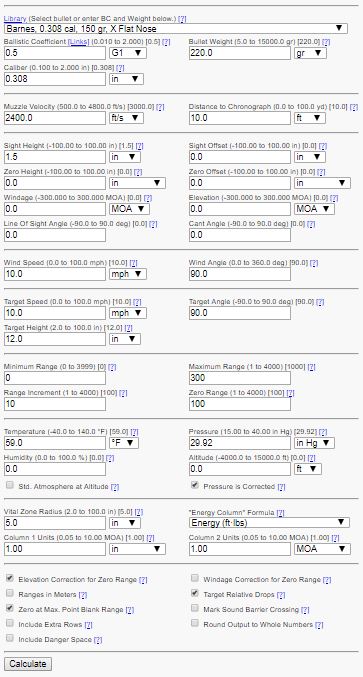I don't do as much writing for BCP as I used to, but I still like to keep my hand in. This means that when something like this challenge is presented, I enjoy taking part, both for the chance to write about something that interests me and for the competitive edge against myself.
Our ever-faithful Editrix Erin
posted yesterday about her own take on the IFAK Challenge from Chaplain Tim. Its a good read, and the take is much like Erin: solid and with a unique perspective.
Like everyone else who decided to take part, I budgeted $30 total and shopped only at places available to everyone, either retail outlets or online. My choices included Wal-Mart, Dollar Tree, and Wish.com. The vast majority came from Dollar Tree, simply due to pricing; I can purchase a lot there for a very small amount, and it was a fantastic means of stretching a budget so much that I could hear my change squealing in pain.
Wal-Mart
My first stop was at Wal-Mart for my only major purchase. It was also my most expensive purchase at $11.13 after tax and it is composed of two separate items.
The
Equate All Purpose First Aid Kit (cost $9.88) is the same one I use in my personal BoB. This comes with gloves, antiseptic wipes, a wide variety of bandages and gauze pads for wound closures as well as medical tape for the gauze pads. Also included are a few small packets of antibiotic ointment, tweezers, an instant cold pack, and butterfly closures. Its a good all-around start for a basic first aid kit that comes with a very reasonable price tag.
The other addition from Wal-Mart was a pair of white terry wash cloths from the bath & bedding department. They were on sale in a 4 pack for $1, and I just couldn't pass that up.
Wash cloths have a huge variety of uses ranging from bandaging to wound dressings to the simple use of cleaning an area of blood so that it can be better treated. They can also be cut into multiple long strips for tying splints.
Online
My second "stop" was actually a bit of online shopping which took place months ago, before the challenge was issued. The items purchased, however, should still be available, and since I already had them it meant I wouldn't have to wait on shipping times to include them.

My first choice from my various Wish.com list is a
Tourniquet that I managed to purchase for $1. I actually got 3 of them when I made the purchase initially, and they're still available at that price, so instead of ordering more I simply moved one of my spares into this Challenge Kit.

Second choice from Wish was a couple of rolls of
Self-Adhering Elastic Bandage. I chose 2 rolls so I would have some spare for my personal bag, but I'm only counting 1 roll for this, at $2.

Third on the purchase list at Wish was a set of
Iodine Swabs for wound cleaning. They are currently listed for $6, but I managed to get them while they were on sale for the impressive price of $1 for 100 swabs.
The total spent at Wish.com was $4, other than shipping, which I'm not going to include since it depends on your location.
Dollar Tree
By this point I had spent almost exactly half my budget. I knew I could add significantly to my kit for the amount I had remaining, but I also knew I was going to have to get seriously creative on some of my additions.
I'm cheap. I admit that I'm cheap. I love shopping when I can spend very little and get a lot, and that's why Dollar Tree has appealed to me for several years. Being able to stick to the rest of my budget and still achieve a wide variety of useful items was a decided win.
This would be the whole haul of 14 separate items from Dollar Tree.
I started with the obvious stuff in the health area: Ibuprofen and Acetaminophen, along with Low-Dose Aspirin. Not everyone can take any one type, and the Aspirin is good for potential heart attacks as well.
The anti-diarrhea and laxative meds speak for themselves, as should the Daytime/Nighttime allergy relief. An ace style bandage wrap, antiseptic wipes, and alcohol-based hand sanitizer were all obvious choices to me.
The items which weren't so obvious were still easy picks to my mind. There's a package of crafting Popsicle sticks to use for splinting, and as something to hold things open in a hygienic manner.
Tampons make a good wound packing material, since they are absorbent cotton and come in a individual packaging. The plastic applicator from those could also easily be used either for wound drainage, or for an emergency tracheotomy.
The small travel sewing kit has a wide variety of materials held within, which can be used for anything from holding bandages in place (the safety pins) or as an impromptu suturing kit. It also contains a small pair of scissors, which will ultimately help with the medical tape when using the gauze from the initial basic kit.
The final item from my brief spree at Dollar Tree was a roll of Duct Tape. It has far too many uses to start listing them here, unless I want Erin growling at me for the next 2 days.
Total spent at Dollar Tree was $14 plus tax, which around here meant $15.62 total.
My Money's Worth
At the end of the day, I managed to stay mostly in budget, mainly by fudging on the shipping costs from Wish.com since I was ordering for myself at the same time as for the challenge, and the shipping charges wouldn't have changed.
- Wal-Mart = $11.13
- Wish.com = $ 4.00
- Dollar Tree = $15.62
Grand total = $30.75 due to taxes.
































